Up until last year when news dropped of how energy prices were about to go sky high, installing solar panels may have seemed like an expensive luxury to most of us.
Now it seems like a way out, and demand for domestic and industrial solar systems has shot up. I had made the switch to EVs in 2021, and although it wasn’t part of a master plan, suddenly the idea of turning the house into a mini power station became strangely compelling.
If a solar system is producing more energy than can be used there and then, EV batteries are an ideal place to store it.
Solar systems come in various types. The most popular option is to install a hybrid system, integrating inverter, solar panels and battery storage together. The inverter also manages the flow of power between house, batteries and, when excess power is produced, back into the grid.
Batteries can also be charged from the grid on a low tariff, then the power used during peak periods, but they’re not that big, which is why EVs with their huge storage capacity are an ideal accessory.

My starting point was to check the household energy bills, which told me that over the past 12 months, including charging two EVs at home, we had used around 6500kWh (units) of electricity.
For solar systems to be effective, they ideally need to be facing south or thereabouts, and my garage faces south-south-west and is free of shade for most of the day. So far so good, and I thought it might be possible to generate around 6000kWh a year.
Interest-free loans for solar systems are available from the government in Scotland, where I live, via the Energy Savings Trust and, even at 2022 energy prices, I hoped it would be cheaper to make the loan repayment than pay the energy supplier.
Even using a commercial low-interest loan would still stack up. To qualify, I had to use an MCS-certified installer (Microgeneration Certification Scheme), who should adhere to a set of standards for installation and equipment.
I opted for hybrid (solar plus batteries) and my chosen installer, Locogen Energy Services, came back with a quote that included several pages of information such as expected daily energy flows for the area I live in, system performance predictions and environmental benefits.

Locogen’s specification was for 16 420W solar panels giving an ‘installed capacity’ of 6.72kW capable of producing an estimated 6008kWh (units) per year.
They would be hooked up to a 5kW-rated Solis hybrid inverter to convert DC electricity from the panels to AC, a 48V, 4.8kWh Pylontech lithium-iron-phosphate battery (Locogen recommended two of these and I would upgrade later) and a wi-fi dongle to connect the system to the phone app via the Solis cloud.
That lot would cost £11,000, with a forecast payback period of 5.9 years and a predicted return on investment of 682%. On top of that, I had to pay a fee of £300 for G99 approval from the distribution network operator. Approval is required if connecting anything larger than a 3.86kW generating system to the grid.
Once it’s fitted, you can either forget about it or continually obsess over the app and, naturally, I chose the second option. The system feeds the home first, then the batteries and then anything left over is fed back to the grid.
An Ofgem thing called the Smart Export Guarantee means home owners get paid anything from around 5p to 15p per unit, so long as you sign up to it. At best, that’s less than half a typical electricity tariff today so it’s important to use what you make, not give it away on the cheap.

This is where EVs come into their own, with their large batteries ready to take on any excess. When the solar system is at full power during the day, the house may be drawing only a few hundred watts, and once the solar batteries are fully charged, the rest will be exported.
Rather than see several kilowatts of energy flowing into the grid, I leave the family Kia e-Niro plugged into the 13-amp trickle charger. If the sun is shining and a quick look at the Solis app confirms there’s energy to spare, I turn charging on and off using Kia’s UVO app.
Does it work? To break even against monthly loan repayments, we need to generate and use an average of 226kWh per month. In March, we used around 330 of a total 380 generated. The rest (13%) was exported and I need to reduce that, but we’re still ahead by more than £50.
The day before this was written, a cloudless day yielded 34kWh of electricity and a good chunk of that ended up in the EV, so roll on summer.
What happens to excess electricity from solar panels?
A hybrid solar system will be doing one of three things. The first is called ‘offset usage’, where power is coming from the grid, the solar panels and the batteries at the same time.
The second is excess solar, where the home and batteries are being satisfied and any excess is being sent to the grid.
Third is night use, where the house is powered by battery storage harvested during the day. One way to automatically avoid excess power being exported when house and batteries have what they need is to use a diverter wall charger like a Zappi.
Solar electronics detect whether current is flowing into the house or being exported via a ‘CT clamp’ clipped onto the main cable entering the house. The Zappi charger does the same thing, and when it ‘sees’ power being exported, it starts charging the car but it will also draw some energy from the grid if the excess drops below 1.4kW.

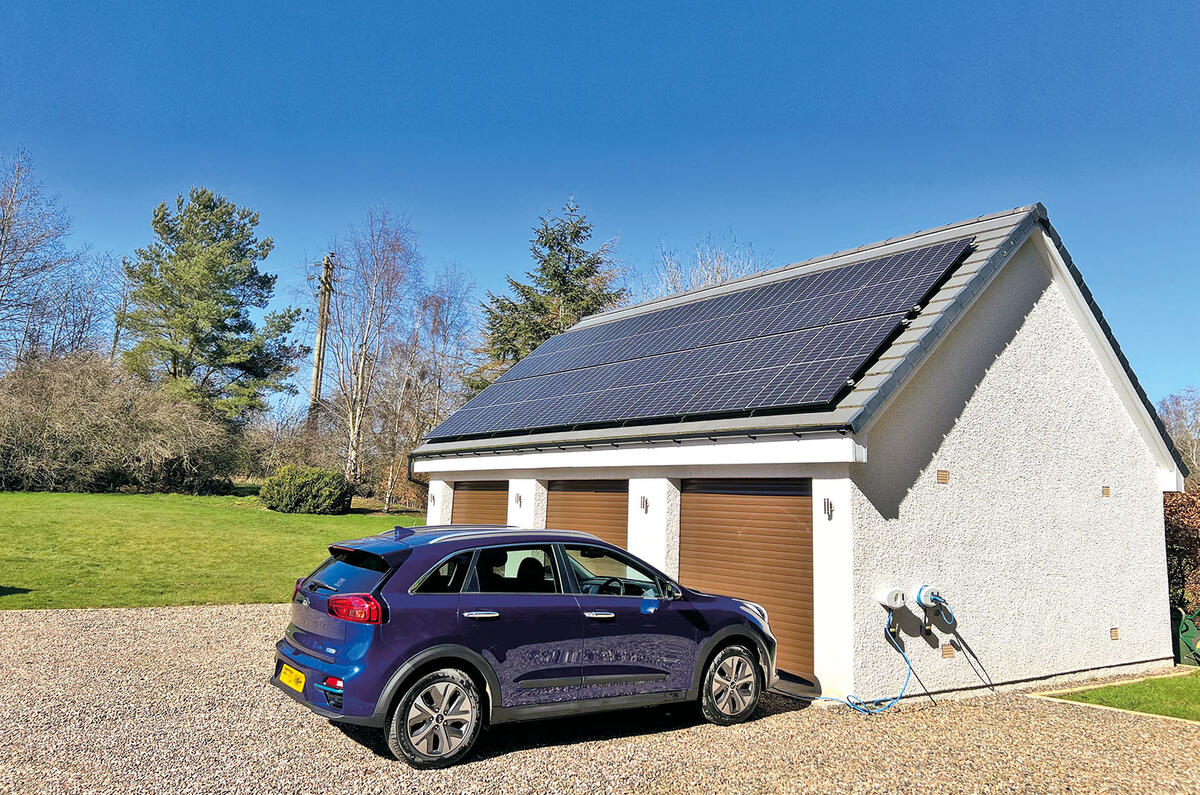
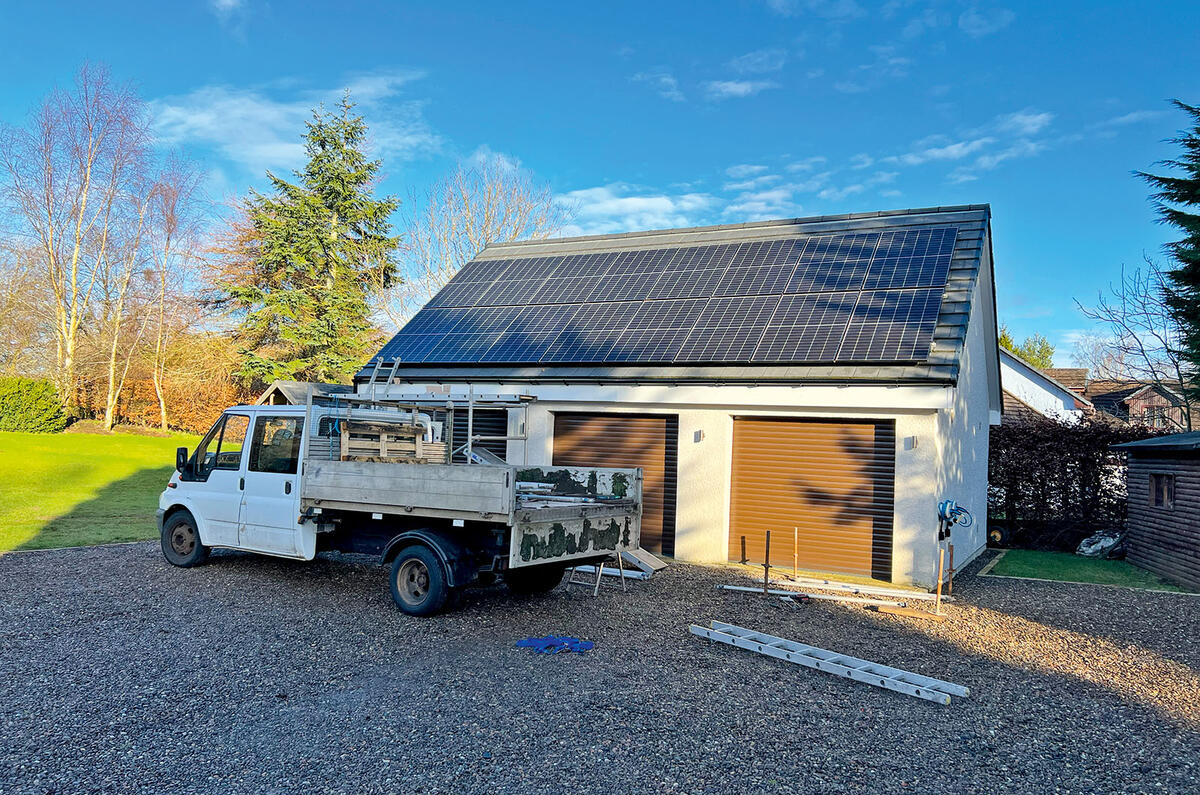
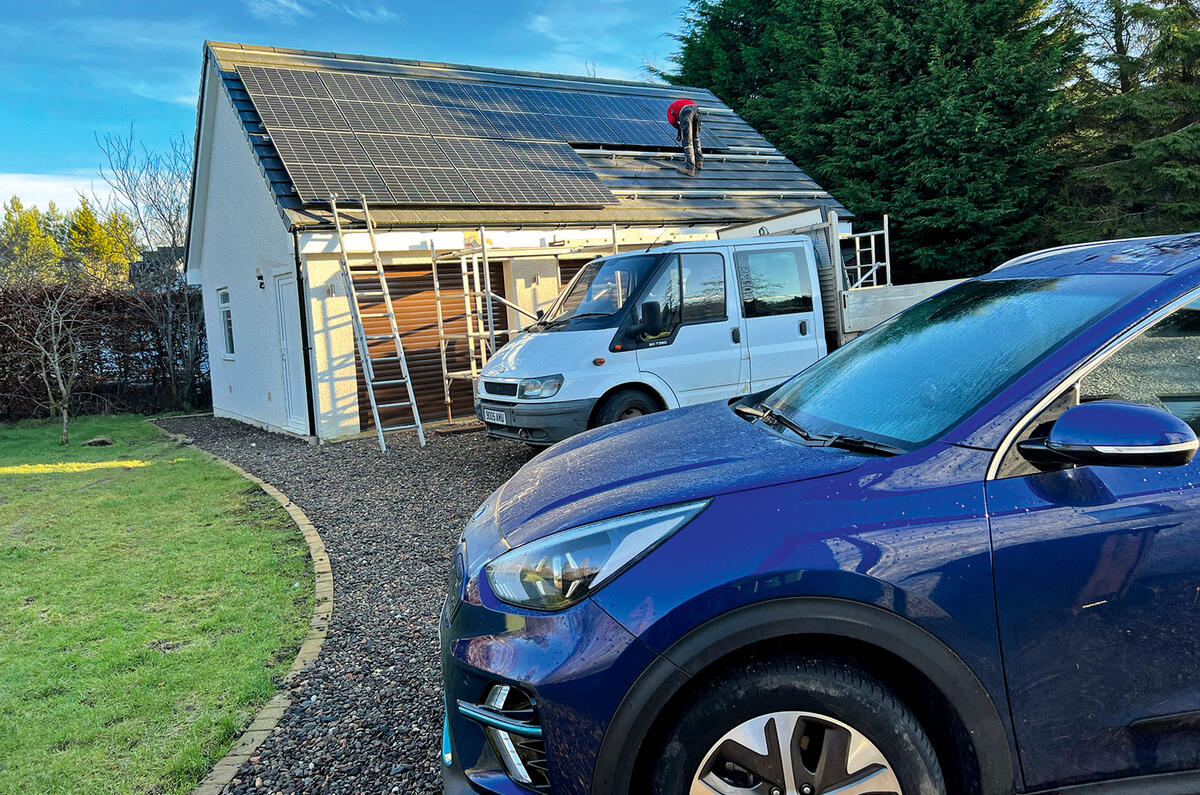
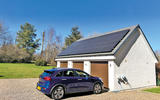
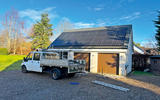
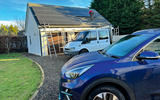




Join the debate
Add your comment
I get paid more than $200 to $400 per hour for working online. I heard about this job 3 months ago and after joining this I have earned easily $30k from this without having online working skills . q4 Simply give it a shot on the accompanying site…
Here is I started.…………www.jobsrevenue.com
Already have a 4kw solar system and now looking at extra panels purely for an EV. Some cars, eg certain Hyundais, can be used as a storage battery. Don't let an installer tell you that you can use solar panels in a mains power cut - supply needs to be synched with mains power.
An EV with solar panels is a good combination which can indeed provide free charging. That is, providing the owner has £11k to invest, a relatively large south facing roof, decent weather and a car lying idle during the day. The example here might work even better if the neighbouring trees to the east could be chopped down! And beware of pigeons who seem to have learnt that solar panels make a particularly attractive place to nest. I and a number of solar panel owning neighbours had this problem - and it can be expensive to fit the necessary protective mesh around the perimiter of the panels to prevent this...
The feed in tarif is now a fraction of what it was a decade ago (when the panels were heavily over incentivised), so to use them to charge an EV makes considerable sense. I would also agree that it should now be a requirement to make them compulsory on new build properties in suitable locations.
The mesh isn't that expensive and the installer should have informed them of the option at the time, we've never had a problem with our solar panels albeit they are thermal ones.
You're right, the mesh isn't that expensive, but the scaffolding cost a fortune!
It's definitely an issue where I live. I'd estimate that around half of solar panel installations either have wire mesh protection or a flock of pigeons already nesting.
Must admit I was not informed of the issue 8 years ago, but presumably pigeons have learnt that it's a good location and somehow communicated this to others! Maybe thermal panels have less clearance underneath?